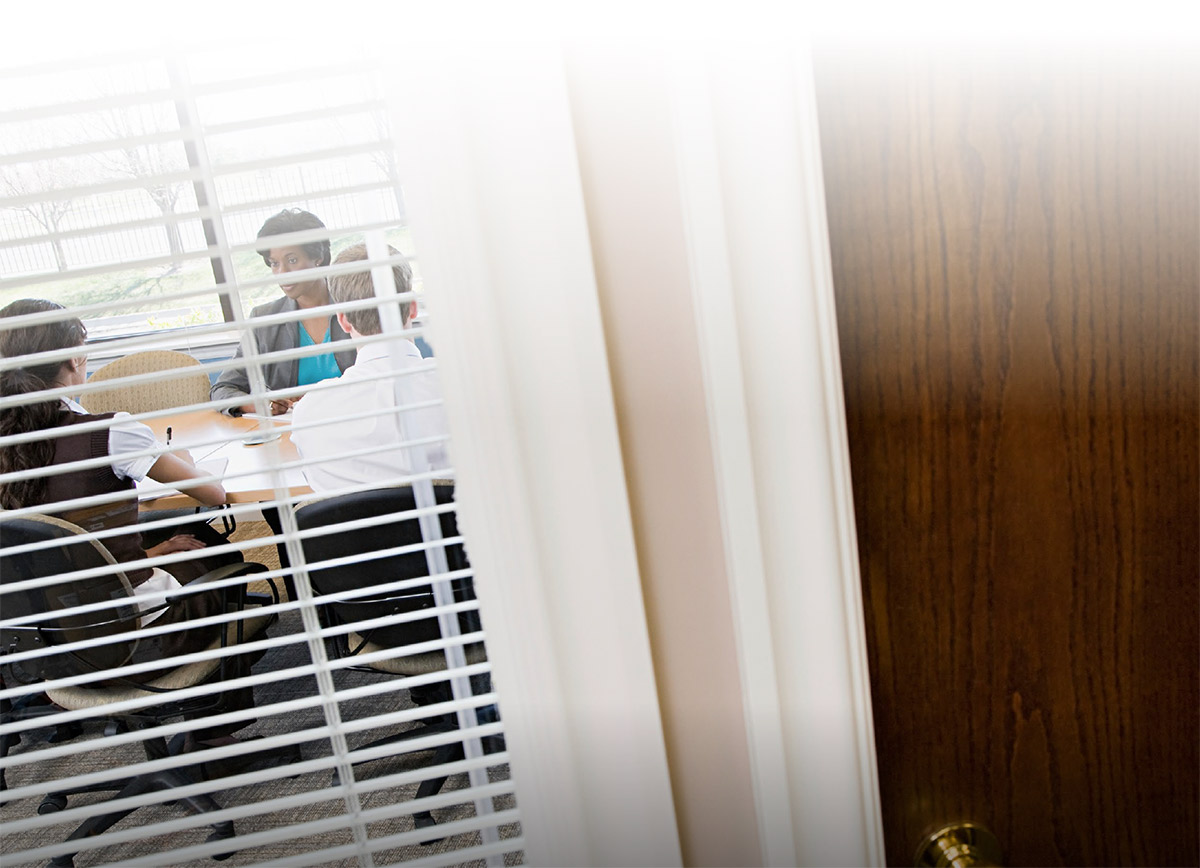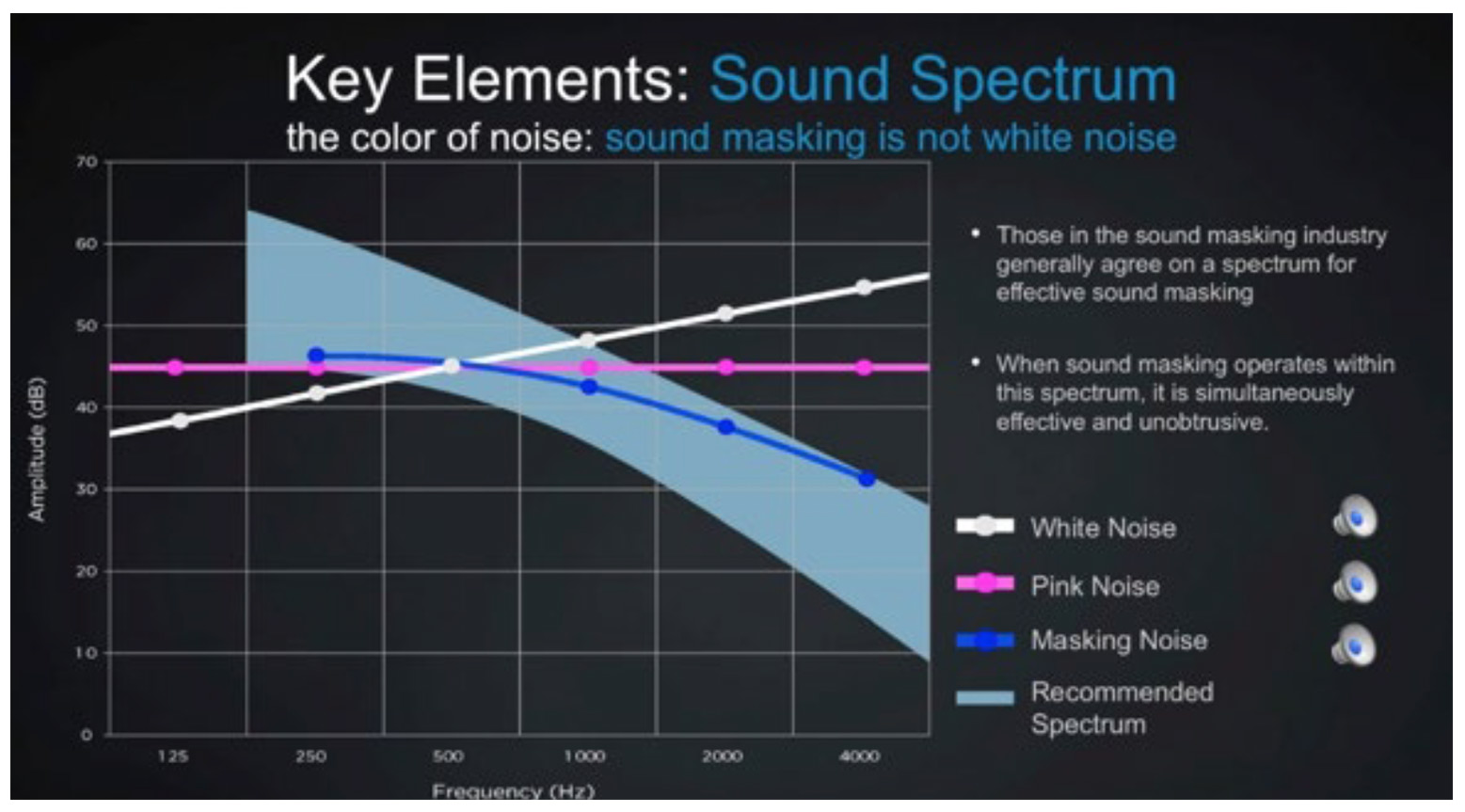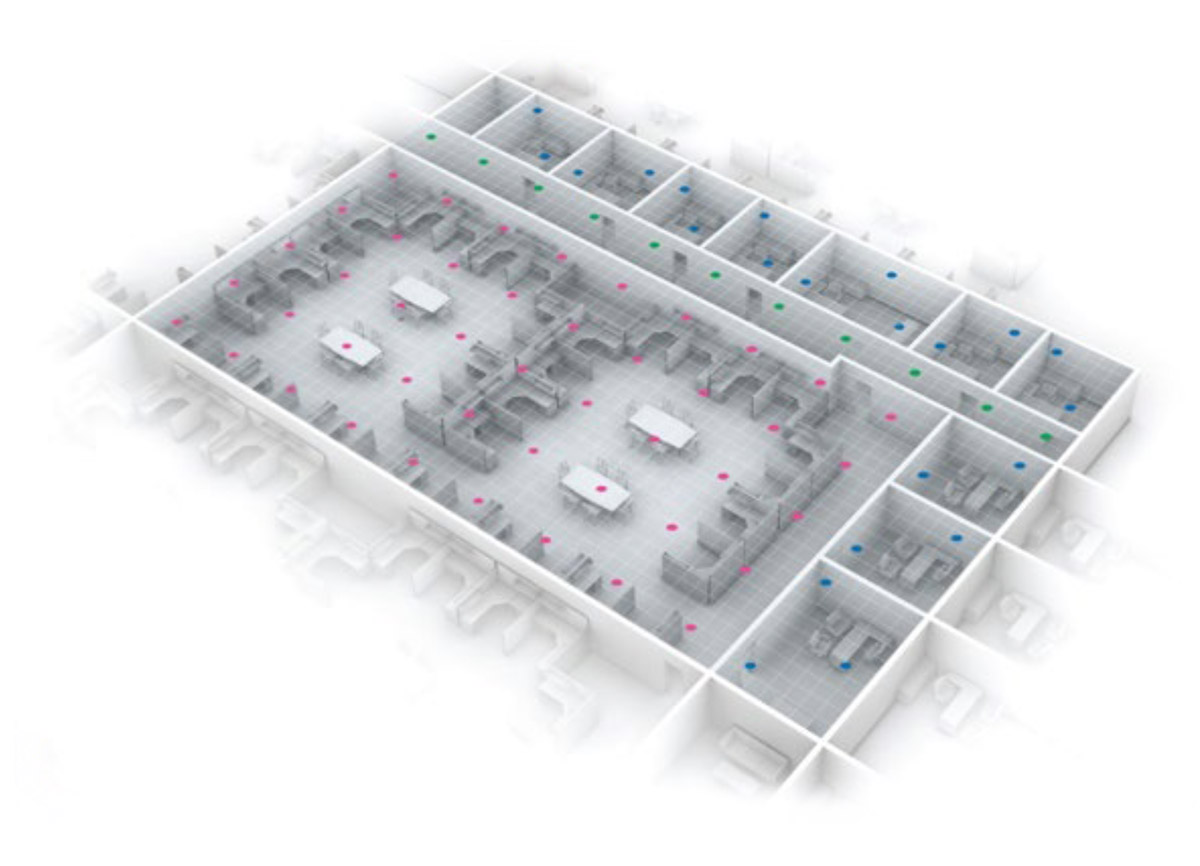When you think of an office building, chances are you picture private offices along the walls and cubicles taking up the open space in the middle. Some tech companies and startups have adopted communal tables instead of cubicles, with other offices taking over older buildings with open rafters and no florescent lights. Across all office types, you can expect to find glass-walled (or thin-walled) private offices and conference rooms.
What’s the commonality between all office environments? More likely than not, dissatisfied employees. Not because of their projects, bosses, or even coworkers, but because their office space lacks speech privacy. Low cubicle partitions, while great for collaboration, do nothing to block the sound of your neighbor talking loudly to their clients. The glass walls and windows make for a modern feel, but conversations literally ricochet off them for the entire office to hear.
While most facility managers, HR managers and IT managers are aware that noise distractions are a problem, they are typically not aware that there is a cost-effective solution that even a COO on a tight budget would approve. They may also be unaware that the best person to solve this problem is the company’s low voltage or telecom cabler. The solution is called sound masking, and it is one of the most effective and efficient solutions to any company’s noise problem.
The Speech Privacy Problem: Dissatisfied Employees
The Center for the Built Environment at UC Berkeley surveyed more than 25,000 workers in more than 2,000 buildings to determine what the key environmental issues were for workers. They discovered that of all the environmental factors workers encounter – general maintenance, office layout, furnishings, thermal comfort, air quality and lighting – speech privacy was the factor they were the most dissatisfied with.
What is speech privacy? Simply put it’s the ability (or lack thereof) of an unintentional listener to understand another person’s conversation. Being dissatisfied with your level of speech privacy means you’re overhearing conversations that aren’t meant to be overheard. This is understandably distracting and annoying.
The results from The Center for the Built Environment survey have been confirmed study after study. Researchers in Australia at the University of Sydney found that lack of speech privacy was the number one complaint among cubicle workers and open-plan employees, with 60% and 50% respectively describing it as a major issue. The University of California Irvine discovered that employees are interrupted once ever eleven minutes, and it can take as much as 23 minutes to get fully reengaged with their work after the interruption.
The Speech Privacy Problem: Lost Productivity
In a recent study presented to the International Congress of Noise as a Public Health Problem, researchers found that on average employees wasted 21.5 minutes per day due to conversational distractions, making lack of speech privacy the number one cause of reduced productivity. An additional 2014 Steelcase/Ipsos study found that employees lost as much as 86 minutes per day due to noise distractions.
Even using conservative estimates, this loss of productivity adds up to big monetary losses for companies. 21.5 minutes daily is roughly 4% of an average employee’s work day (based on an 8 hour day). Some quick math shows that a company with 100 employees and an average employee salary cost of $50,000 is losing $200,000 a year in lost productivity.
The Speech Privacy Problem: Legal Ramifications
Lack of speech privacy extends beyond just a distraction for employees and an expense to employers, it also means that employees can overhear conversations they should not hear.
As walls to private offices become cheaper and thinner, a closed door no longer guarantees speech privacy (and in fact may be worse, as it creates an illusion of privacy).
Think of the HR nightmares that could come out of conversations overheard by the wrong people! In some cases, not providing sufficient speech privacy can even be illegal. This includes any office where medical information is shared, such as conversations between doctors and patients, who need to ensure privacy in order to comply with HIPAA regulations. The regulations don’t stop at HIPAA, however. The Gramm Leach Bliley Act requires financial firms to protect clients’ non-public financial information, including how that information is collected. FERPA is a federal law that protects the privacy of a student’s education records. In short, failure to safeguard discussions about medical, financial and other sensitive subjects from being overheard by others is illegal, and potentially a huge liability for the company affected.
Sound Masking: Solving the Speech Privacy Problem
Although everyone knows that office noise is a problem, few know there’s a solution to the problem beyond giving every employee a private office or building higher cube walls.
The easiest acoustical treatment to implement to combat a lack of speech privacy is called sound masking. Despite having been around since the 1950s, the public at large is generally unaware of the technology. Essentially, sound masking is the process of adding a low level, unobtrusive background sound to an environment to reduce the intelligibility of human speech and noise distractions in that environment. If you’re thinking of “white noise,” you’re close. We’ll cover that in a moment.
While it may sound counter-intuitive to add sound to the environment to make it quieter, that’s exactly what happens. In effect, the introduced masking sound is specifically tuned to the frequencies of human speech to cover up, or “mask,” excess speech noise and make the acoustical environment more comfortable. Installing a sound masking system involves cabling work above the ceiling tiles and connecting the cables to a centralized control module, usually housed in the server room.
Sound masking does not cancel speech, it simply shortens the distance from which a talker can be overheard. Most office environments allow speech to travel 50-100 feet. With sound masking, that distance is cut closer to 15 feet, and overheard speech is less intelligible than it would be normally. This means an employee might still hear that a conversation is occurring, but they can’t understand exactly what’s being said, meaning the conversation is easier to ignore and is less distracting.
Sound Masking: It’s All About Uniformity
Despite the misconceptions of many, sound masking is not white noise. White noise, if amplified to an effective masking volume, would actually be very unpleasant. Think of a radio playing hissy static, when not tuned to a station. Proper sound masking, on the other hand, is more pleasant sounding and usually barely noticeable, similar to the sound of airflow through a vent. Different manufacturers engineer masking sounds in various ways, but they all target a sound quality and decibel level that masks the intelligibility of the human voice.
For proper installation of a sound masking system, the ideal sound masking spectrum must be established and then amplified to the right level. Once that step is complete, the technology integrator must ensure that level remains consistent throughout the office.
If the sound masking is too quiet it won’t be effective, and if it’s too loud it will be a distraction itself. The proper level for sound masking is no louder than about 48 decibels (dBA). In comparison, an office conversation between two people next to each other is about 60 dBA. The ration of voices to the masking noise ensures that sound masking will not affect the intelligibility of two people talking to each other, but will reduce the ability of someone else to overhear the conversation from 15-20 feet away.
Sound Masking: Proper Zoning
It is also important to properly zone an office space to create an ideal sound masking level. The system must be flexible enough to accommodate varying architectural spaces, taking into account the room size, ceiling height, furnishings, acoustic treatments and more, while also changing levels in order to provide a consistent sound field. This is done by splitting the system into smaller zones, so that spaces with similar acoustics can be grouped together and the system can be tuned for each environment.
An easy example is shown below where the open center, private offices and corridors are each on separate zones. Each of these environments is acoustically different, so it’s important to be able to adjust the masking for each space without affecting the other zones. This doesn’t mean micromanaging every couple of speakers—a good sound masking system will deliver consistent sound directly into each acoustic space, while still allowing for similar spaces to be grouped together as zones. As uniformity is the name of the game, end-user control is hardly ever necessary or recommended. Most employees won’t even notice the sound masking system, and once installed it should require about as much routine maintenance attention as the exit signs.
Sound Masking: Not Just For Offices
Although commercial office spaces provide typical environments for sound masking, other industries and vertical markets can also benefit from the technology.
Educational institutions, such as computer centers, testing rooms and libraries are perfect environments for sound masking because they are typically areas where students would appreciate fewer noise distractions. Organizations with call centers can benefit from sound masking by making it easier for employees to hear their calls and keep customer information private. Financial institutions such as commercial banks find sound masking an effective way to keep sensitive financial data safe from prying ears. Also, as mentioned previously, the healthcare industry needs to protect speech privacy to ensure not only patient confidentiality, but also to help patients in hospital rooms rest and recuperate with fewer noise distractions.
Sound Masking: The Lay of the Land
Sound masking systems range in complexity from systems with dozens of components, lots of IP addresses and heavy programming to those consisting of a simple wall-mounted control module, familiar category cables and easy, daisy-chained loudspeakers. For most sound masking systems, the speakers are managed by a central control module that is usually housed in the server room or a similarly out-of-sight location. Control modules can be connected to a network and be password-protected, but since sound masking systems are generally a “set it and forget it” kind of device, many end-users choose to leave the controllers off of their networks entirely. The only day-to-day changes in a sound masking system might be to shift the volume level down slightly at night so the security guards can hear across the office, but even that can be set to run automatically when the system is installed. It’s worth noting, however, that many systems also offer paging and background music capabilities as well, and that integration may dictate where a controller is located. Sound masking systems do not interfere with any other mass notification or paging systems that a company might have installed.
Sound masking systems generally fall into two types. There are “direct field” systems, where speakers are installed into ceiling tiles (or mounted to beams and posts for open ceilings) and emit sound directly into the environment. These generally use a larger number of small speakers and require less tone adjustment since the sound plays directly into the occupied space. There are also “in-plenum” systems, where speakers are installed above the ceiling tiles and sound is reflected off of the ceiling deck and into the environment below. These generally use a smaller number of larger speakers but require more tone adjustment since there are lots of obstructions in the plenum space (HVAC, cable trays, etc.) that affect the sound that pushes through the occupied space.
Each sound masking system on the market has its plusses and minuses – it’s really up to the integrator and the end-user to determine the system that will work best. The one thing all of the systems have in common is that they all require professional installation from an experienced cabling professional.
Content courtesy Cambridge Sound Management
Alamon/Telmon is a certified Bi-Amp Cambridge partner offering highly effective solutions for Soundmasking and sonic control for a wide range of commercial environments.
Cambridge Sound Management, Inc. manufactures QtPro sound masking systems to help organizations across multiple industries protect speech privacy, reduce noise distractions, and fuel workplace productivity. Powered by direct-field Quiet Technology, QtPro works by emitting a uniform, barely perceptible background sound at the frequencies of human speech. Cost effective and easy to install, QtPro is deployed in hundreds of millions of square feet of space throughout the world including commercial organizations, healthcare facilities, financial services, government agencies, and educational institutions.








